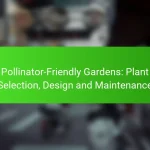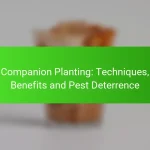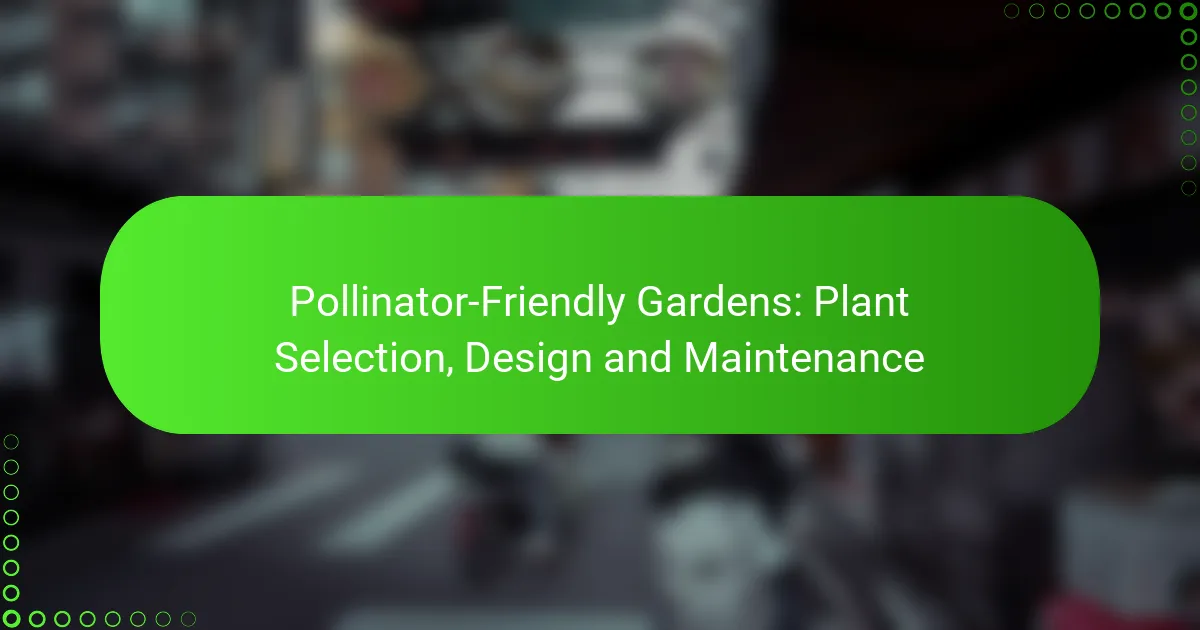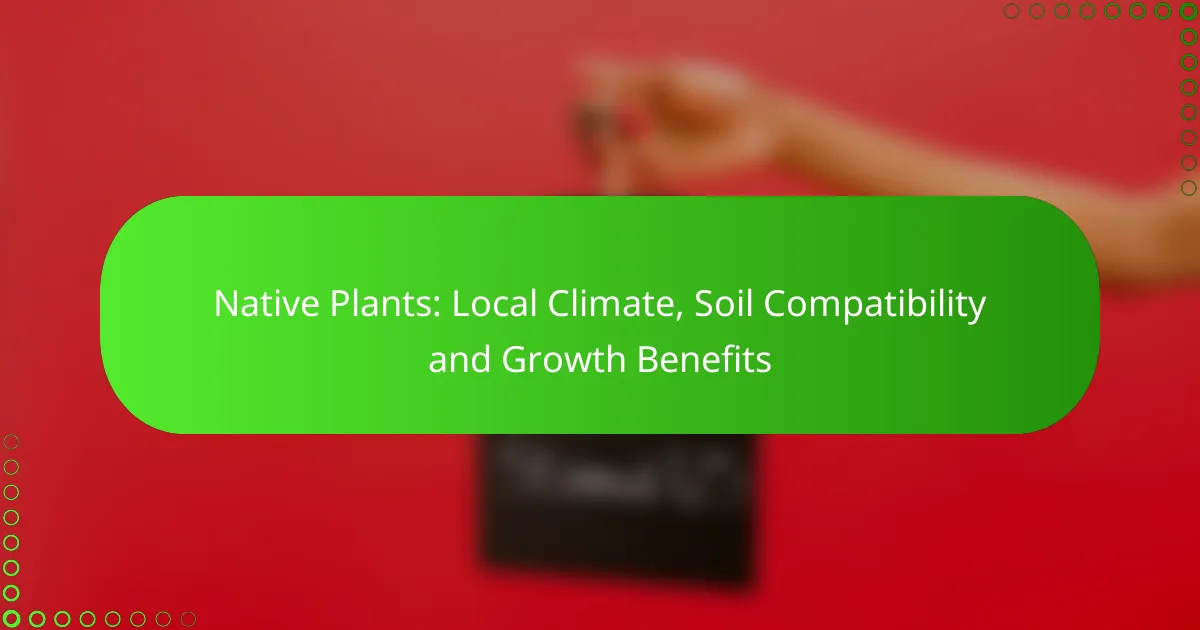Creating a pollinator-friendly garden is essential for supporting local ecosystems and enhancing biodiversity. By selecting native plants, incorporating a variety of flower types, and designing inviting habitats, you can attract essential pollinators like bees and butterflies. Implementing effective design practices ensures a vibrant garden that thrives throughout the growing season.
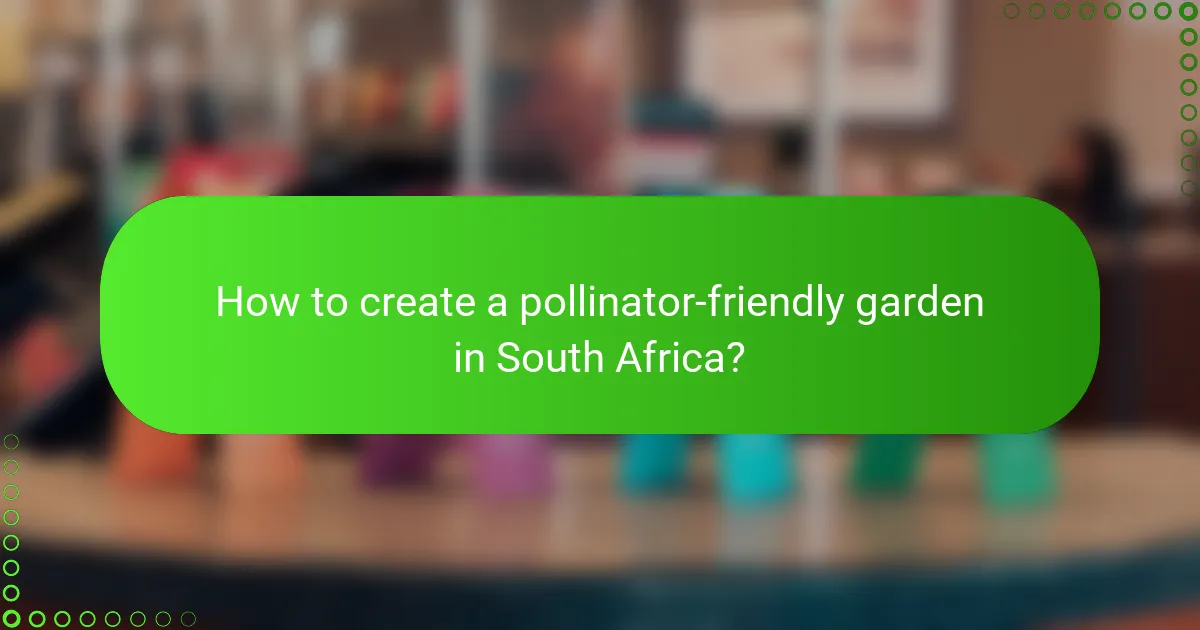
How to create a pollinator-friendly garden in South Africa?
Creating a pollinator-friendly garden in South Africa involves selecting native plants, incorporating diverse flower types, providing water sources, and designing habitats that support pollinators. These steps help attract and sustain various pollinators, such as bees and butterflies, which are crucial for biodiversity and food production.
Select native plants
Using native plants is essential for a pollinator-friendly garden, as these species are well-adapted to the local climate and soil conditions. They also offer the best resources for local pollinators, providing nectar and pollen throughout the growing season.
Consider including plants like the Cape fynbos, aloes, and various indigenous grasses. These plants not only support pollinators but also require less water and maintenance compared to non-native species.
Incorporate diverse flower types
Diversity in flower types ensures that your garden attracts a variety of pollinators. Different species are attracted to different shapes, colors, and sizes of flowers, so including a mix can enhance pollinator visits.
Opt for flowers that bloom at different times of the year to provide a continuous food source. For example, early bloomers like the African daisy can support bees in spring, while late bloomers like the red hot poker can aid them in autumn.
Provide water sources
Water is vital for pollinators, especially during dry spells. Incorporating shallow water sources, such as birdbaths or small ponds, can help attract and sustain these creatures.
Ensure that water sources are shallow enough for insects to land safely. Adding stones or pebbles can provide landing spots, making it easier for pollinators to access water without drowning.
Design for habitat
Creating a suitable habitat involves more than just planting flowers. Incorporate features like nesting sites, shelter, and a variety of plant heights to support different pollinator species.
Leave some areas of your garden undisturbed, allowing for natural nesting sites. Consider adding brush piles or leaving some dead wood, as these can provide essential habitats for solitary bees and other beneficial insects.
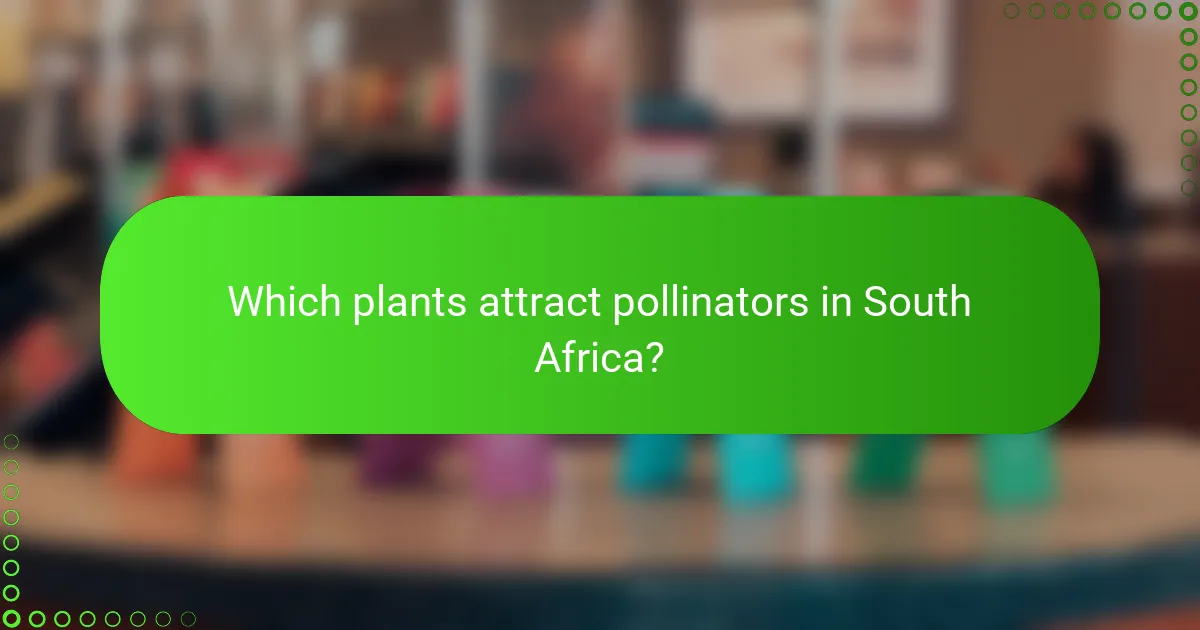
Which plants attract pollinators in South Africa?
In South Africa, various plants can effectively attract pollinators, including bees, butterflies, and birds. Selecting the right species is crucial for creating a vibrant, pollinator-friendly garden that supports local ecosystems.
Indigenous flowering plants
Indigenous flowering plants are particularly beneficial for attracting local pollinators. Species such as the Cape honeysuckle (Tecoma capensis) and the African marigold (Tagetes erecta) are excellent choices, as they have evolved alongside native pollinators. Incorporating these plants can enhance biodiversity and provide essential food sources for local wildlife.
When designing your garden, consider planting a variety of indigenous flowers that bloom at different times throughout the year. This ensures a continuous supply of nectar and pollen, which is vital for sustaining pollinator populations.
Herbs like lavender and rosemary
Herbs such as lavender (Lavandula spp.) and rosemary (Rosmarinus officinalis) are not only useful in the kitchen but also attract a range of pollinators. Their fragrant flowers provide nectar that is particularly appealing to bees. Planting these herbs in sunny, well-drained areas can maximize their growth and pollinator attraction.
To maintain these herbs, regular pruning encourages bushier growth and more blooms. Avoid using chemical pesticides, as they can harm beneficial insects, including pollinators.
Fruit-bearing plants
Fruit-bearing plants like citrus trees and berry bushes are excellent for attracting pollinators while providing delicious produce. Citrus trees, such as oranges and lemons, produce fragrant flowers that draw in bees and butterflies. Similarly, berry bushes like blueberries and raspberries offer both nectar and fruit for pollinators and gardeners alike.
When planting fruit-bearing plants, ensure they have enough sunlight and space for proper growth. Companion planting with flowering herbs can further enhance pollinator visits and improve fruit yields.
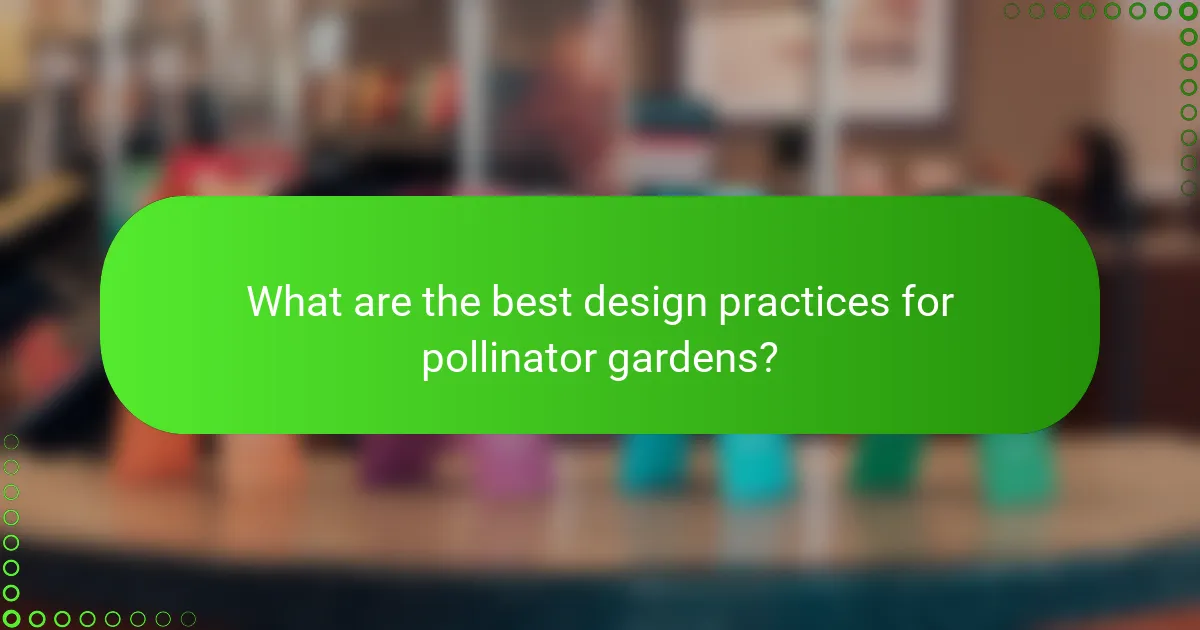
What are the best design practices for pollinator gardens?
Effective design practices for pollinator gardens focus on creating a welcoming habitat for bees, butterflies, and other beneficial insects. Key strategies include using flower clusters, providing shelter, and ensuring a continuous bloom throughout the growing season.
Use clusters of flowers
Planting flowers in clusters rather than individual plants enhances visibility and accessibility for pollinators. Groups of the same species can attract more insects, as they can easily locate food sources. Aim for clusters of at least three to five plants for optimal impact.
Consider varying the height and color of the flowers in your clusters to create an appealing visual landscape. This diversity not only attracts different pollinator species but also contributes to the overall health of the garden ecosystem.
Include shelter and nesting sites
Providing shelter and nesting sites is crucial for supporting pollinator populations. Incorporate features like brush piles, hollow stems, and bee hotels to offer safe spaces for insects to rest and reproduce. Native plants can also serve as natural nesting habitats.
When designing your garden, think about including areas with undisturbed soil, as ground-nesting bees prefer these spots. Additionally, avoid using pesticides, which can harm both pollinators and their habitats.
Plan for continuous bloom
To sustain pollinator activity, plan for a continuous bloom from early spring through late fall. Select a variety of plants that flower at different times to ensure food availability throughout the seasons. This strategy helps maintain healthy pollinator populations and supports biodiversity.
Choose native plants whenever possible, as they are often better adapted to local conditions and more attractive to local pollinators. A well-planned garden can include early bloomers like crocuses and late-season flowers such as asters to create a vibrant and functional habitat.
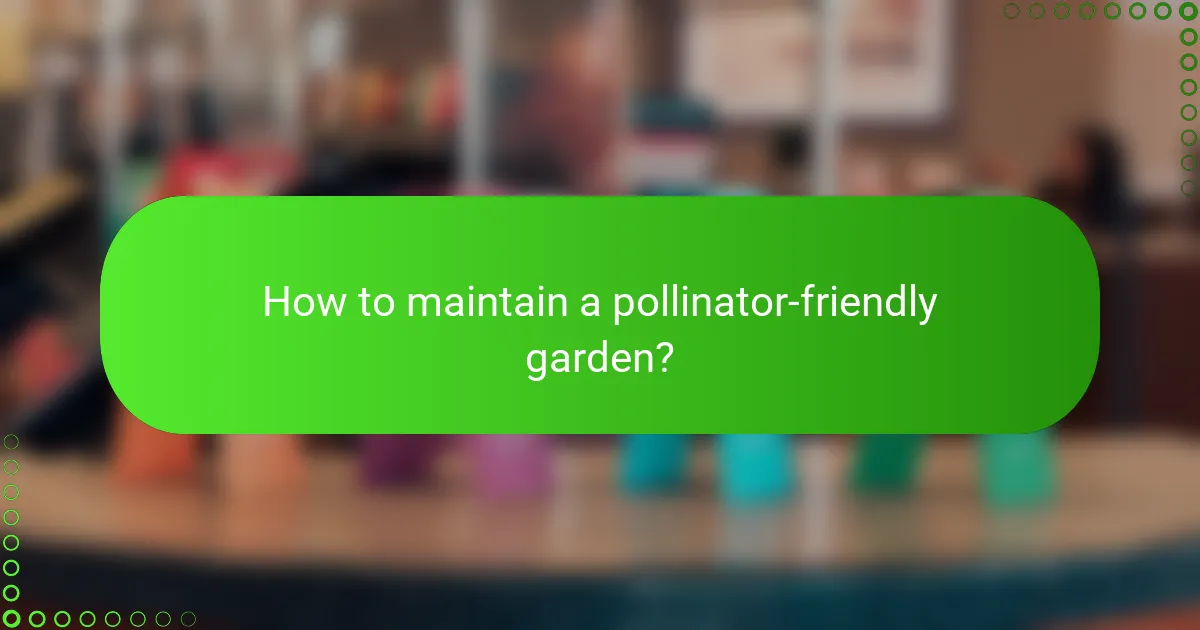
How to maintain a pollinator-friendly garden?
Maintaining a pollinator-friendly garden involves creating a supportive environment for bees, butterflies, and other beneficial insects. Key practices include limiting pesticide use, ensuring adequate watering, and conducting seasonal clean-ups to promote healthy plant growth and biodiversity.
Limit pesticide use
Reducing pesticide use is crucial for protecting pollinators. Many common pesticides can harm bees and other beneficial insects, so consider using organic alternatives or natural pest control methods.
When necessary, apply pesticides during the evening or early morning when pollinators are less active. Always read labels carefully to choose products that are less harmful to beneficial insects.
Practice regular watering
Consistent watering helps maintain healthy plants that attract pollinators. Aim to water your garden deeply but infrequently, allowing the soil to dry out between sessions to encourage deep root growth.
Consider installing a drip irrigation system or using soaker hoses to deliver water directly to the roots, minimizing water waste and reducing the risk of fungal diseases.
Conduct seasonal clean-ups
Seasonal clean-ups are essential for maintaining a pollinator-friendly garden. Remove dead plant material and debris in the spring to promote new growth, but leave some stems and seed heads over winter to provide habitat and food for pollinators.
In the fall, consider cutting back perennials only after the first frost, allowing pollinators to utilize the plants for shelter during the colder months. This practice supports biodiversity and enhances the overall health of your garden.

What are the benefits of pollinator-friendly gardens?
Pollinator-friendly gardens provide essential habitats for bees, butterflies, and other pollinators, which are crucial for plant reproduction and food production. These gardens contribute to local ecosystems, enhance biodiversity, and promote healthier environments.
Support local biodiversity
Creating a pollinator-friendly garden supports local biodiversity by providing habitats for various species. Native plants attract a range of pollinators, which in turn support other wildlife, including birds and beneficial insects.
Incorporating a variety of flowering plants that bloom at different times throughout the growing season ensures that pollinators have a consistent food source. This diversity helps maintain a balanced ecosystem, making it more resilient to environmental changes.
Enhance food production
Pollinator-friendly gardens significantly enhance food production by increasing the pollination of fruits, vegetables, and nuts. Many crops depend on pollinators for optimal yields, and gardens that attract these creatures can lead to more abundant harvests.
For instance, planting flowers like sunflowers or lavender near vegetable patches can improve the pollination rates of crops such as tomatoes and cucumbers. This not only boosts yield but can also improve the quality of the produce.
Improve ecosystem health
Pollinator-friendly gardens play a vital role in improving ecosystem health by promoting soil health and water conservation. The presence of diverse plant species helps prevent soil erosion and enhances nutrient cycling.
Moreover, these gardens can reduce the need for chemical pesticides and fertilizers, leading to healthier soil and water systems. By fostering a natural balance, pollinator-friendly gardens contribute to a more sustainable environment for all living organisms.



